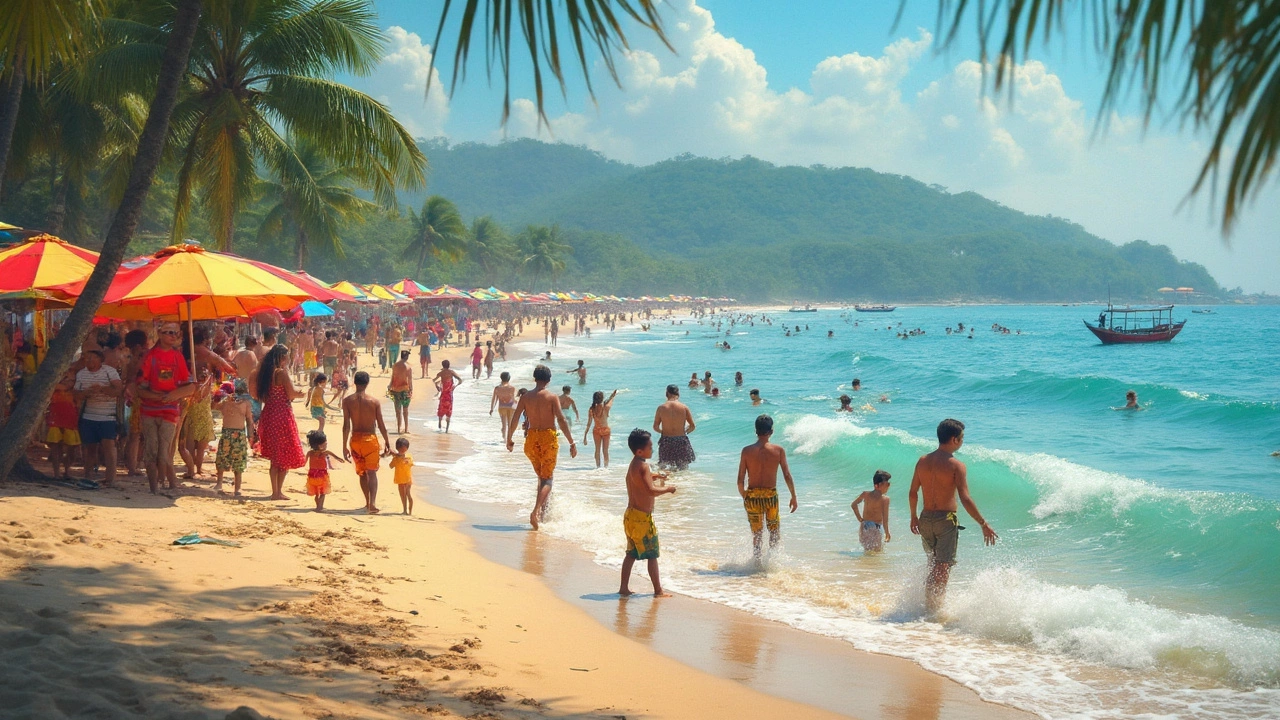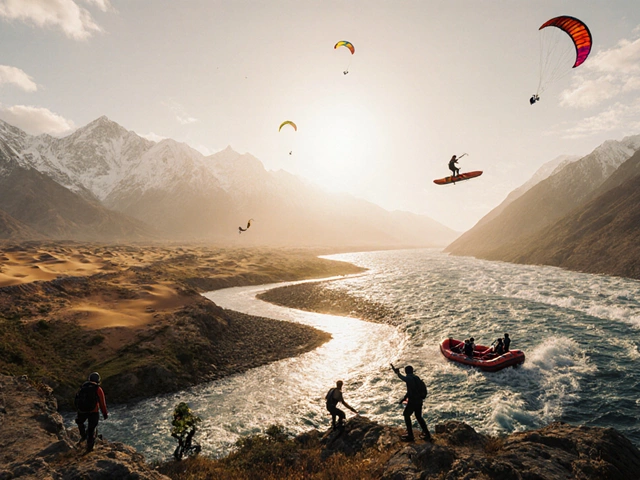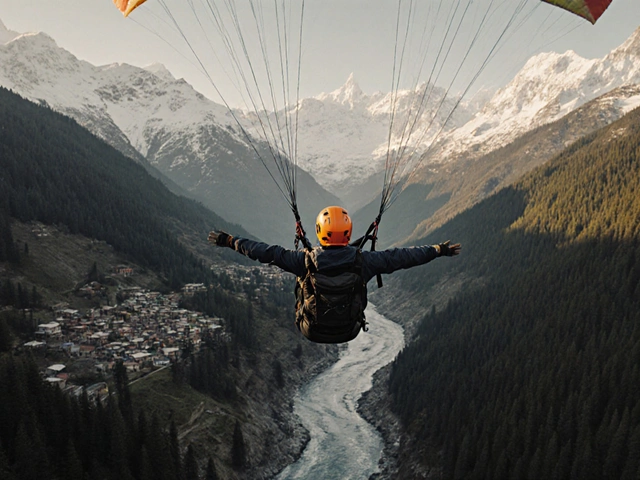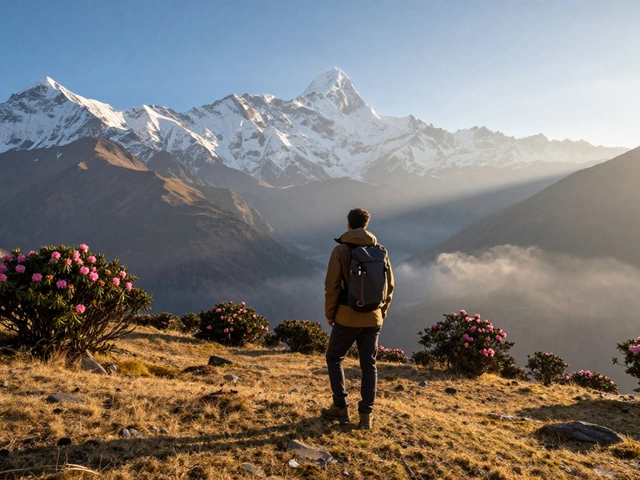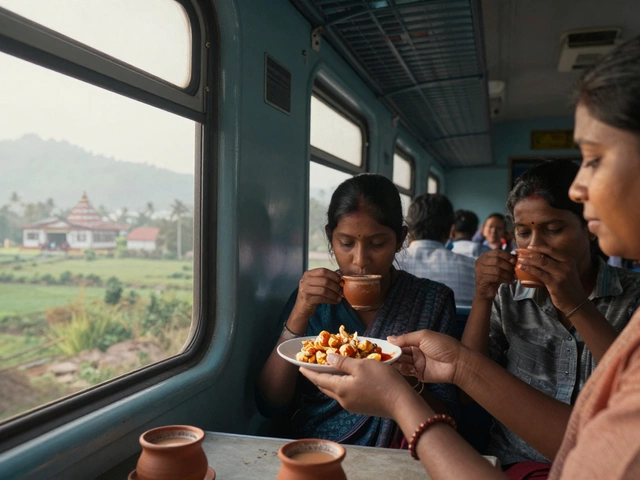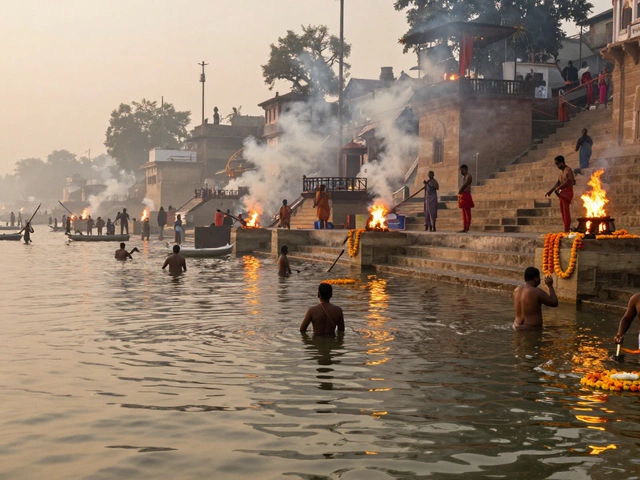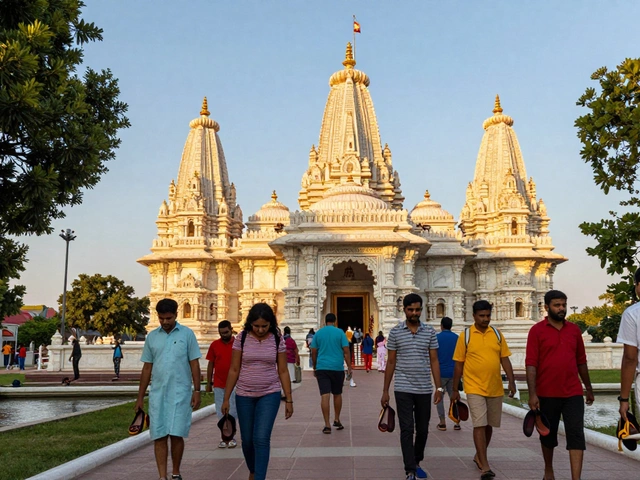Dreaming of a swim in Goa? You’re not alone—people fly in from across the world just to splash around in those blue waves. But not every beach in Goa is a swimmer’s paradise. Some beaches look gorgeous but come with strong currents or jellyfish lurking just below the surface. Locals know which spots you can dive in safely and which are better for just chilling on the sand.
Before jumping into the sea, you’ll want to know about tides, flags, lifeguard stations, and even the time of year. Monsoon season, for example, turns the ocean wild and not-so-friendly for swimmers. During the dry months, the water calms down, and certain beaches feel almost like a giant swimming pool—especially when the lifeguards are around and the red flags are down.
If you’re hoping to swim with your kids or not-so-confident friends, some Goa beaches are better bets. Others have drop-offs and unpredictable undercurrents. Curious which are which? Hang tight, I’m going to break it down honestly—no sugarcoating, just what you really need to know.
- What Makes a Beach Swimmable?
- Goa’s Best Beaches for Swimming
- Safety Hazards: Currents, Jellyfish, and More
- Tips for Safe Swimming in Goa
What Makes a Beach Swimmable?
There’s more to picking a swimming spot in Goa than finding the prettiest view. Safe swimming depends on a mix of nature, safety measures, and knowing local quirks. Let’s get real—some beaches just aren’t built for swimming, no matter how great they look.
First thing that matters: water conditions. Calm, steady waves are a good sign. If you see big crashing waves, swirling currents, or choppy water, think twice before heading in. Lifeguards in Goa place color-coded flags to help out. Here’s what they mean:
- Red flag: Not safe—currents are too strong or waves too rough.
- Yellow flag: Stay alert—OK for good swimmers, but keep an eye out.
- Green flag: Good to swim—conditions are usually safe.
Another big factor is the beach slope. Some Goa beaches have a sudden drop right near the water, which can knock you off your feet. Others have a long, gentle slope—you barely notice the water getting deeper. Families usually go for these gentle slopes, like at Palolem and Benaulim. Meanwhile, places like Anjuna get tricky pretty fast.
Cleanliness counts too. Goa’s popular beaches are cleaned often, but a few quieter or less maintained spots sometimes have trash or debris after storms, especially during monsoon season.
You can also run into seasonal hazards. Monsoon (June to September) is a total no-go for swimming—lifeguards put up red flags and warn everyone off. Just wait until October for stable water.
| Beach Name | Wave Conditions | Slope | Lifeguards | Best Months |
|---|---|---|---|---|
| Palolem | Calm | Gentle | Yes | Oct-May |
| Baga | Moderate | Medium | Yes | Oct-May |
| Anjuna | Rough | Steep | Sometimes | Oct-May |
| Arambol | Calm | Gentle | Yes | Oct-May |
So, if you’re chasing a dip in the sea, check the flags, ask a lifeguard, and trust the locals if they wave you back to shore. Even confident swimmers can get caught by invisible currents or sudden changes. Carry on reading for details about specific Goa beaches where you can actually swim without the drama.
Goa’s Best Beaches for Swimming
Not all Goa beaches are created equal when it comes to swimming. Some are calm and family-friendly, while others have a fierce undertow that catches even strong swimmers off guard. If your plan is to actually get in the water—not just stare at it—here are the spots where locals and lifeguards agree you can usually swim safely.
At the top of the list comes Palolem Beach, especially the north end, where the waves are mellow and the water stays shallow pretty far out. Families love it, and you’ll spot lots of people swimming in the mornings when the sea is at its calmest. Just keep an eye out for kayak rentals—they show up in clusters.
Colva Beach is another go-to, thanks to regular lifeguard patrols and a gentle slope into the water. It gets crowded on weekends but is famous among both tourists and Goans for safe swimming. Arambol draws a global crowd, but its main area is good for a swim most of the year, except when the monsoon kicks up rougher waves.
- Palolem Beach: Great for all ages, especially calm in the mornings.
- Colva Beach: Lifeguards are on duty every day; water is usually gentle.
- Arambol Beach: Swim near the main area; avoid hidden rocks at the far ends.
- Benaulim Beach: Quieter than Colva, super clean, and usually has mild waves.
- Morjim Beach: Wide, flat sands and water that stays shallow for a stretch, but keep an eye out—in turtle nesting season, parts are off-limits.
You’ll notice fewer people actually swimming at Candolim and Calangute, even though they’re Goa’s most popular stretches. That’s because sudden drops and strong currents pop up here. If you must swim there, stay right in front of lifeguard towers and never go alone.
To help you compare some of Goa’s beaches for swimming, check out this simple table:
| Beach | Lifeguard Presence | Water Conditions | Suitability for Beginners |
|---|---|---|---|
| Palolem | Yes | Calm, Mild Waves | Excellent |
| Colva | Yes | Gentle | Excellent |
| Arambol | Yes | Moderate (seasonal) | Good (watch flags) |
| Benaulim | Yes | Calm to Moderate | Great |
| Morjim | Sometimes | Calm, Shallow | Good (off-peak season) |
There’s no harm in asking lifeguards or beach shack owners about the water that day. You’d be surprised how much the mood of the sea can change in just a few hours. Always check for red flags—they mean it’s not safe, even if the water looks tempting.
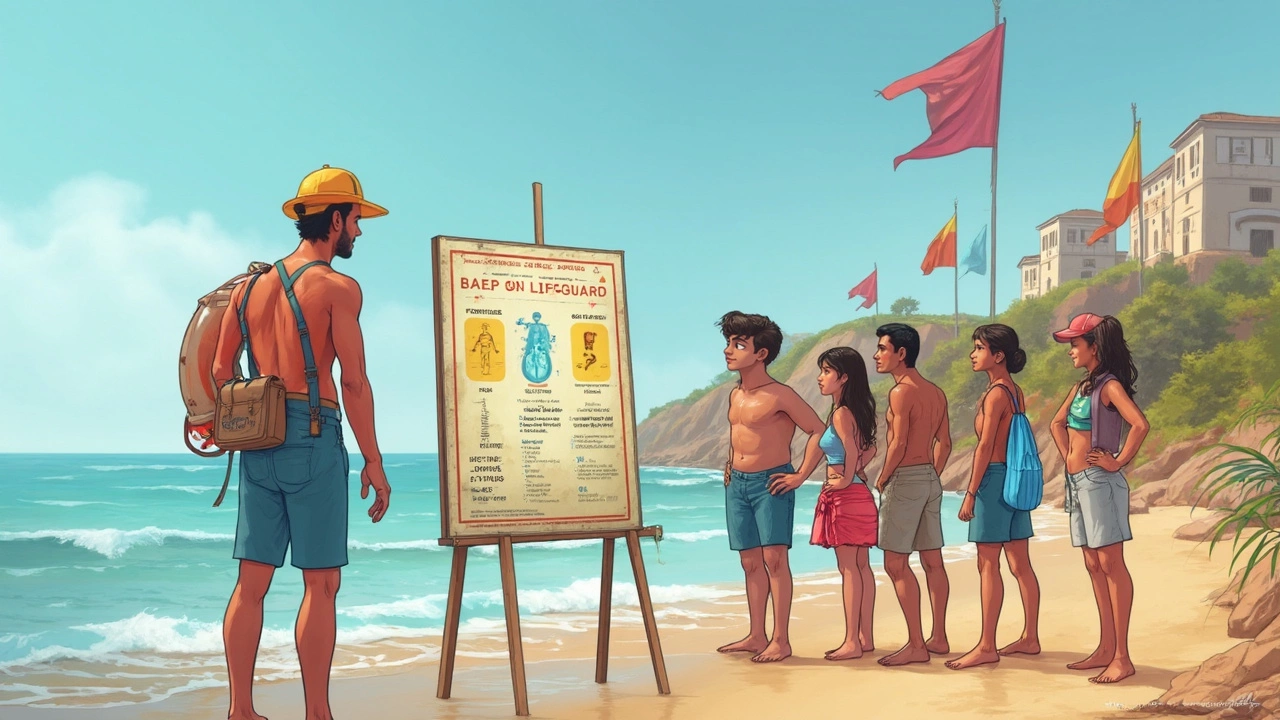
Safety Hazards: Currents, Jellyfish, and More
Before hitting the water on Goa beaches, it pays to know what you’re up against. Stuff like rip currents and jellyfish stings are more common than you might think—and ignoring warning signs could seriously mess up your beach holiday.
Rip currents are probably the biggest danger. They look like calm patches between waves, but they’re actually fast flows of water pulling you out to sea. Palolem and Baga get special mention here—both have solid lifeguard teams, but swimmers do get surprised by a rogue current now and then. Lifeguards always set up red flags for the worst spots, and it’s smart to believe them. According to the National Institute of Oceanography in Goa, between October 2023 and March 2024, there were about 110 rescues from rip currents around North and South Goa.
| Hazard | Where You'll Find It | Advice |
|---|---|---|
| Rip currents | Baga, Palolem, parts of Candolim | Swim only between flags, avoid rough water |
| Jellyfish | Mostly South Goa after monsoon | Don't touch washed-up jellyfish, rinse with vinegar if stung |
| Strong tides/underwater drop-offs | Candolim, Morjim, Ashwem | Watch for signs, don’t wander far from shore |
Jellyfish don’t show up every week, but certain months—usually September to November, just after monsoon—can see a few wash up. South Goa gets more of them, particularly at beaches like Colva and Varca. Most stings hurt but aren’t too serious; still, don’t let kids touch jellyfish, even dead ones. Lifeguards and local shack owners usually have vinegar, which actually helps.
Sometimes, you’ll see warning boards for tides and sudden drop-offs. This means the waves look chill but the sand can dip suddenly, making it hard to stand. Stay close to shore if you’re not a confident swimmer, especially at Candolim and Morjim.
- Always swim where lifeguards can see you—most of Goa's popular beaches have them from sunrise till sunset.
- Stick to flagged zones. Green means go; red means nope, not safe.
- If you get caught in a current, don’t fight it—swim sideways, then head back to the shore.
- Tell someone before you enter the water, especially if you’re alone.
Goa is amazing for swimming, but the sea here demands respect. Pay attention to signs and locals, and you sidestep the worst surprises.
Tips for Safe Swimming in Goa
Goa’s beaches have waves that look super inviting, but safety needs to come first. Most accidents can be avoided with some quick checks and smart habits. Here are real-deal tips you should actually follow before you wade in or let your friends loose in the water.
- Goa beaches with lifeguards always top the safety chart. Most popular beaches like Calangute, Baga, and Palolem have lifeguards during tourist season. If the flags are red, swimming is a hard no. Stick to where you see yellow and red flags—they mark the safest swimming zones.
- Avoid swimming during monsoon (June to September). The water’s rough, currents get sneaky, and there’s more debris in the sea. Even locals stay out at this time.
- Check for signboards. If it says "No Swimming," don’t test your luck. These signs are usually put up after drownings or when dangerous marine life is spotted.
- Swim with a buddy or where there’s a crowd. More eyes means quicker help if you get into trouble.
- If you’re not a strong swimmer, stick close to the shore. Goa’s beaches can have sudden drop-offs. Even if the water looks calm, it can get deep fast.
- Watch out for rip currents—they pull you out, not under. If you feel the current dragging you away from shore, swim parallel to the beach. Don’t fight the current straight on.
- Keep an eye on kids at all times. Even at quieter beaches like Agonda or Patnem, don’t let little ones swim alone.
- Stingy jellyfish? They’re not a myth. After the rains, jellyfish sometimes wash closer to shore. Ask a lifeguard if they've spotted any and rinse off quick if you get stung.
- Be picky about your swim time. Early mornings and late afternoons are calmer, but don’t swim after a heavy meal or after drinking alcohol—accidents are way more common then.
Here’s a quick table that covers the basics at a glance:
| Safety Factor | What to Look/Ask |
|---|---|
| Flags | Red = Unsafe, Yellow/Red = Safe area |
| Lifeguard Presence | Always pick beaches with guards during swimming hours |
| Time of Year | Best: Nov-April; Avoid: Monsoon (June-Sept) |
| Rip Currents | Swim parallel if caught, don’t panic |
| Jellyfish | Ask locals/lifeguards before entering |
One last thing—don’t bring expensive gadgets or valuables into the water. Losing your phone to a rogue wave isn’t anyone’s idea of a fun beach day. Keep it basic, stick to these tips, and the only thing you’ll be worried about is sand stuck in your swimsuit.
